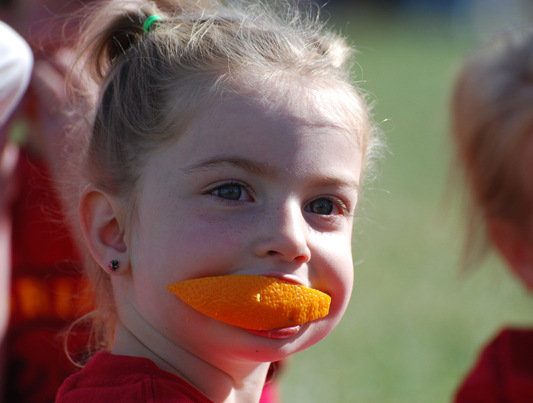Professional Development
NAA publishes fresh, new content every week covering a wide variety of topics related to the field of aftershool. In addition, NAA offers a variety of opportunities for virtual professional development (PD) through meaningful content, conversations and connections. Click here to see full descriptions of virtual PD offerings.
Leadership at the Movies - Part 1
Friday, 25 April 2014 05:13At the 2014 NAA Annual Convention, Bill Stanczykiewicz, president and CEO of the Indiana Youth Institute, presented entertaining, inspiring, and humorous movie clips that revealed the essential characteristics of leadership. Here is the first part of the top ten guide created from his presentation. These leadership principles can earn you "two thumbs up" from your colleagues and funders as well as the youth and families you serve.
Speak the Language of Business
Tuesday, 08 April 2014 08:20Schools and parents are turning more and more to fundraising to support out-of-school time programs because of budget cuts. However, trying to convince businesses to help out can be challenging, and it's easy to get turned down by not following certain business protocols. Here are some tips to consider when fundraising from businesses, corporations, and people in the for-profit sector.
Tips for Using Transmedia In Out-Of-School Settings
Tuesday, 01 April 2014 00:00Transmedia, also known as “transmedia storytelling,” is the technique of telling a single story across multiple media platforms. Each platform—for example, television, videogame, or website—offers a distinct element that contributes to the user’s understanding of the overall story.
Simple Ideas for Making Your Out-of-School Program Healthier
Wednesday, 26 March 2014 03:35Out-of-school time providers have the unique opportunity to create environments where healthy eating and physical activity are encouraged. It doesn’t matter if you’re a before school program, an afterschool program, a summer program, a scouting organization, or a sports team, you play a meaningful role in empowering youth to eat better and move more. As you think about your goals for 2014, below are resources and tools you can try throughout the year to promote healthy eating and physical activity.
12 Tips for Integrating Academic Enrichment Into Your Afterschool Program
Thursday, 20 March 2014 00:00I have been working with out-of-school time across the country for over 15 years now, and these tips are based on practices that I have seen work. Most of them are built on things that I have seen and learned from the field. Take a look! You might already be doing some of them or this may be a new way of looking at how you work with kids. I hope you enjoy.
Federal Funding for Grade-Level Reading Proficiency
Monday, 17 March 2014 09:31The Finance Project's LEARNING TO READ: A Guide to Federal Funding for Grade-Level Reading Proficiency is a first of its kind. This guide helps state and local officials, leaders of community-based and national organizations, school leaders, and private investors find funding to strengthen and sustain grade-level reading programs and services for children from birth through third grade. It identifies more than 100 federal funding sources that can be used to address the root causes of failing to read, to help fund remediation strategies, and to build cohesive infrastructure and systems necessary to effectively train and guide professionals.
Moving Summer Learning Forward: A Strategic Roadmap for Funding in Tough Times
Friday, 07 March 2014 08:20While summer learning is an emerging strategy for education reform, uncertainty over how to pay for it, especially in an environment of tough budget choices, has been a barrier for school districts and community partners alike. But for those who know where to look and devise creative strategies to combine funding streams for summer learning, there is also substantial opportunity.
BGCA and NRPA to Create Healthier Environments for Kids
Wednesday, 26 February 2014 03:51In the United States today, more than a third of kids are overweight or obese. On any given day, up to 20% of American children do not consume any fruits, and up to 30% do not consume any vegetables. Two in three do not get enough daily physical activity. At the same time, nearly 15 million school-aged kids are on their own after school. Fortunately, it has been recently announced that two of the nation’s largest providers of low-cost or free out-of-school time activities have committed to create healthier environments for five million kids in their programs.
Financing Expanded Learning Time in Schools
Tuesday, 25 February 2014 06:46The Wallace Foundation and the National Center on Time & Learning (NCTL) has teamed together to provide a resource dedicated to examining afterschool programs and how they can be financed. Financing Expanding Learning Time in Schools: A Look at Five District Expanded-Time Schools offers brief case studies of five different models for funding an expanded school day in district schools. By examining the funding sources, challenges and opportunities associated with each model, the report provides some preliminary answers to the question of how schools and districts are paying for expanded learning time.
VIDEO: Afterschool and Afterschool Systems
Friday, 21 February 2014 02:40High-quality afterschool programs, which provide rich opportunities for growth, learning and fun, reach only a small percentage of children and teens today. Hear national experts discuss what cities can do to close this gap and boost quality and participation in dynamic out-of-school-time programs brought to you by The Wallace Foundation.
National AfterSchool Association • 2961A Hunter Mill Road, #626 • Oakton, VA 22124 • info@naaweb.org










